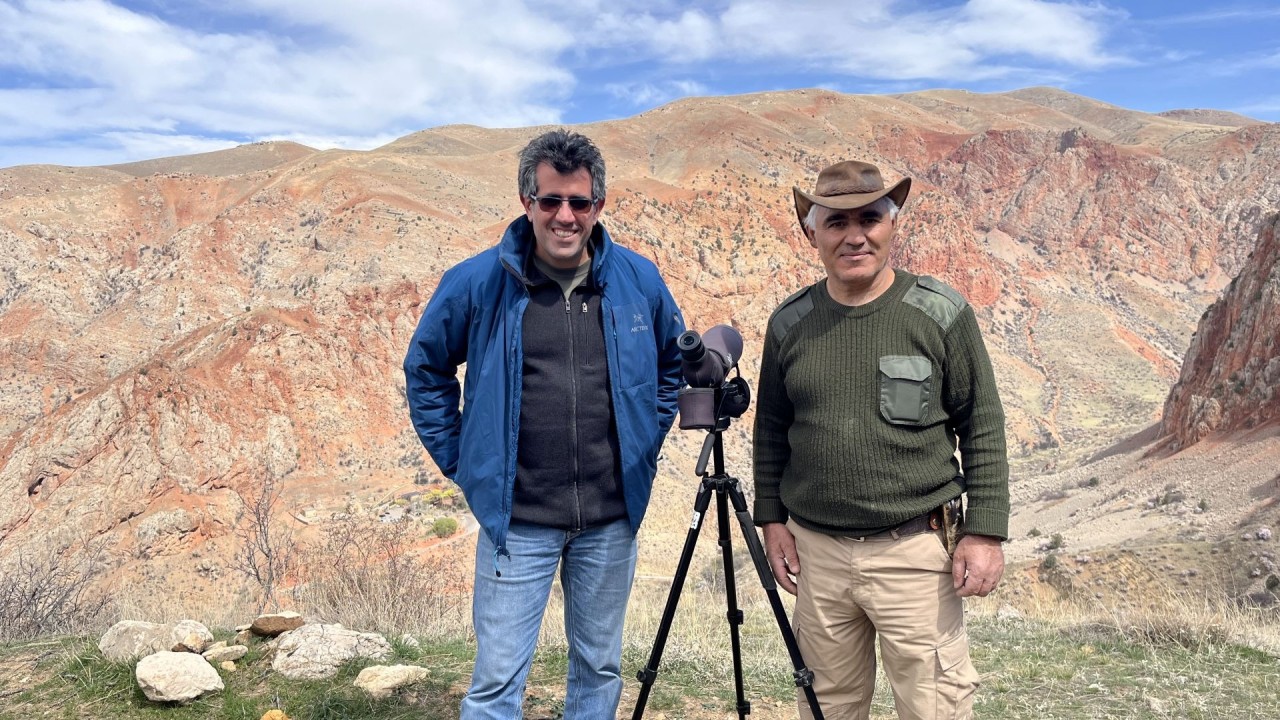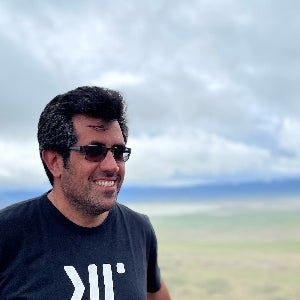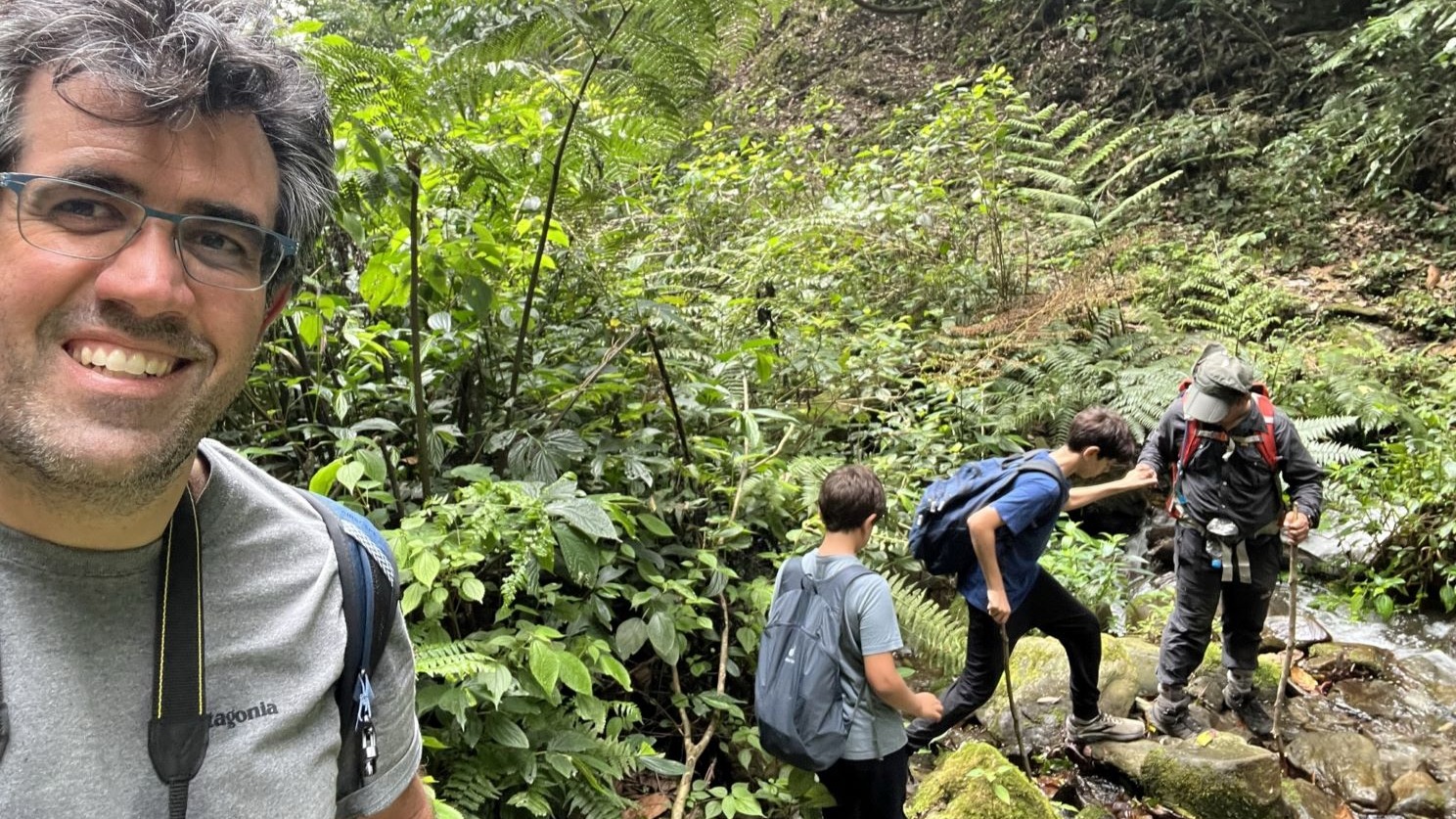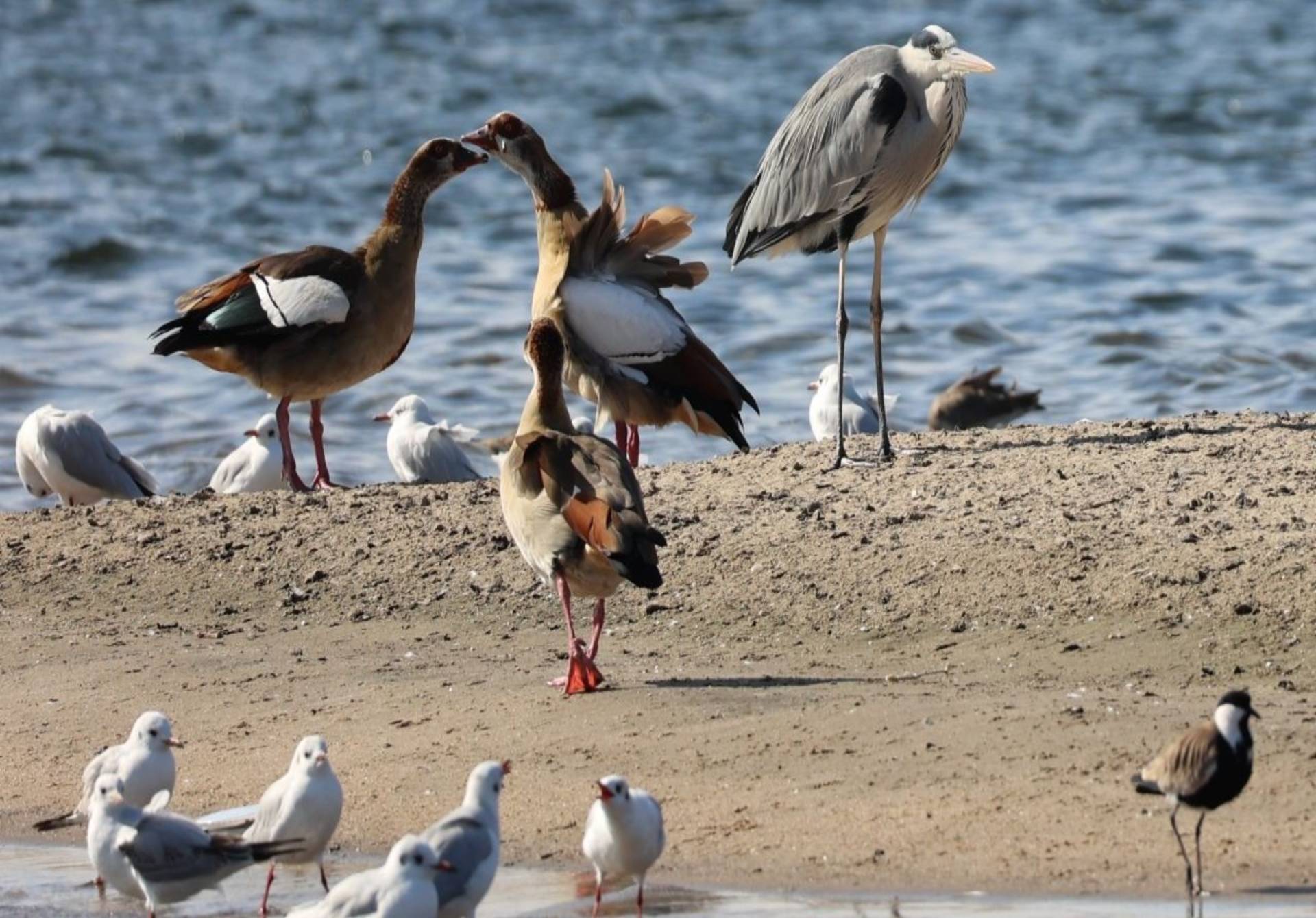I recently visited the stunning Armenian Highlands and Caucasus with my family, discovering the unique bond Armenians have with nature, expressed through spiritual traditions and stories-most notably Noah’s ark coming to rest on Mount Ararat. Our journey began in Tbilisi, Georgia, and ended in Yerevan, Armenia, where the next Biodiversity COP (COP17) will take place in October 2026.
A highlight of our trip was visiting the Ararat and Vayots Kotayk provinces, near the Turkish border, south of Yerevan. In Ararat, we explored the Khor Virap monastery, offering a beautiful view of Mount Ararat—the resting place of Noah’s Ark in Abrahamic traditions and a powerful symbol of our ongoing duty to protect biodiversity, the focus of this article.
Vayots Dzor is home to the elusive and threatened Caucasian Leopard-specifically the Persian Leopard-as well as the Bezoar Goat and other unique species. There, we met Vardges, a dedicated conservationist who works closely with WWF Armenia to protect these wild animals and their habitats, and leads the country’s first community-managed protected area.
This article provides a brief overview of our trip, sheds light on the deep connection Armenians have with nature, and reinterprets Noah’s story in the context of today’s extinction and ecological crisis. It reminds us of our responsibility to protect biodiversity-and by extension, our own species—from an unprecedented deluge.

The highlights of our trip in the Caucasus
One question I’m often asked is: why choose Georgia and Armenia as destinations? First, their unique geography in the South Caucasus and Armenian Highlands — nestled between the Dead Sea and the Caspian-makes them ecologically fascinating. Their capitals, Tbilisi and Yerevan, are also a short direct flight from Dubai, where I live. Second, the region is steeped in cultural heritage shaped by ancient civilizations, offering a deep reservoir of stories, traditions, and wisdom-including the Noah story that threads through this article. And third, there’s a personal connection: I grew up in Alexandria, Egypt, surrounded by a vibrant Armenian community-and my mother-in-law, who joined us on this trip, is half Armenian.
While we explored the incredible cultural heritage of both countries with fantastic guides-including sites dating back over 6,000 years — I’ll focus here on nature and Armenia’s natural heritage in particular.
The Armenian Highlands are dominated by rugged mountains, volcanic plateaus, and fertile valleys. This landscape forms a watershed for major rivers: the Euphrates, Tigris, Kura, and Aras-the latter being Armenia’s main river, with many of its tributaries also in the country.
Our week began in Old Tbilisi, a walkable melting pot of Georgian, Armenian, Persian, and Russian influences. We visited historic churches like Metekhi, as well as the mosque and synagogue, and strolled through the botanical garden and sulfur baths. On our second day, we explored Mtskheta, Georgia’s ancient capital and a UNESCO site, among the oldest continually inhabited cities in the world. Just a short drive away was Gori, the birthplace of Stalin.
A highlight in Tbilisi was the Georgian National Museum’s stunning collection of hominin skulls-some millions of years old, and the oldest discovered outside of Africa.
Crossing into Armenia, we stopped at Lake Sevan and visited the Sevanavank Monastery. Framed by snow-capped peaks, the lake is not only the largest in the Caucasus but one of the world’s highest-altitude freshwater lakes, sitting at 1,900 meters.
Yerevan was a pleasant surprise-modern, clean, and full of life. Street artists, vibrant cafes, and a welcoming atmosphere set the tone. What stood out most were the city’s public fountains, offering fresh, drinkable water-a simple yet powerful gesture that minimizes plastic use.
On our second day, we explored the Ararat and Vayots Dzor provinces near the Turkish border. First was Khor Virap Monastery, tied to Armenia’s adoption of Christianity as a state religion in 301 AD. From there, we had a breathtaking view of Mount Ararat, traditionally believed to be where Noah’s Ark came to rest.
We then headed south to Areni-1 Cave, an archaeological site dating to 4,100 BC and considered the world’s oldest winery.
Vayots Dzor is also home to the endangered Caucasian Leopard and the iconic Bezoar Goat-species I’ll discuss further in the next section. We met with Vardges Gharakhanyan of the Arpa Protected Landscape, Armenia’s first community-managed protected area, supported by WWF.
On our final day, we explored the Garni region, east of Yerevan. We visited three remarkable UNESCO sites: the 1st-century Greco–Roman Temple of Garni (the only pagan temple still standing in Armenia), the Monastery of Geghard with its rock-hewn chapels, and the Symphony of Stones-a breathtaking natural formation of basalt columns lining the Azat River gorge.
That afternoon, while having lunch at a local vineyard, we spotted majestic White Storks in the nearby fields-a graceful and symbolic presence in the landscape.
Throughout the trip, we indulged in a delicious array of local food: juicy khinkali, cheesy khachapuri, lahmajo, sweet sujuk, apricot jam, and freshly pressed pomegranate juice. Every meal was a sensory delight-even if it made burning off the calories a challenge!

Armenia’s traditional connection to nature
Present-day Armenia may be smaller than the ancient kingdom, but its cultural influence spans the Caucasus and far beyond. While about 2.5 million people live in Armenia today, over 7 million Armenians live across a vast global diaspora.
Despite its compact size, Armenia boasts an extraordinary natural landscape-from fertile valleys and caves to 16 mountain ranges and hundreds of rivers and streams. This mosaic of habitats supports iconic species like the Caucasian Leopard, Bezoar Goat, and White Stork, all vital to the region’s ecological fabric.
What struck me most during this trip, beyond the beauty of Armenia’s monasteries, was their deep relationship with the natural world. Built from local stone that blends into dramatic surroundings, monasteries like Khor Virap, Noravank, and Geghard feature intricate carvings of native animals and plants: goats, lions, eagles, grapevines, pomegranates, and more.
Many of these monasteries stand atop ancient sacred sites, preserving echoes of pre-Christian nature-based spirituality. Some stone carvings even trace back to the Urartian Kingdom (9th-6th centuries BC), revealing a spiritual continuity grounded in Armenia’s landscapes.
Outside the monasteries, those same animals and plants still roam- though under mounting pressure. Their survival now depends on renewed conservation efforts.
One highlight of our journey was visiting the Arpa Protected Landscape-Armenia’s first community-managed protected area-and meeting its chief guardian, Vardges, who works with WWF Armenia to protect the endangered Persian Leopard, the Bezoar Goat, and other key species.
Vardges took us in search of the elusive Bezoar Goat, the leopard’s primary prey. Spotting a leopard would require days of patient camping in more remote areas like Khosrov Reserve or the transboundary Zangezur Mountains, shared with Iran and Azerbaijan.
Still, with a spotting scope and some luck, we saw two herds of wild Bezoar Goats from afar. This species holds global significance: it is the wild ancestor of the domesticated goat, among the first animals domesticated by humans 11,000 years ago. Its image is found not just in Armenian iconography, but also in Mesopotamian, Anatolian, and Persian art-even in Zoroastrianism.
We also spotted birds like the White Wagtail, Eurasian Kestrel, and the majestic White Stork-a cultural symbol of fortune and renewal. Each spring, storks migrate from Iran to nest on trees, rooftops and power poles, bringing joy to villages across Armenia.

Noah’s story and the ecological crisis
Beyond Armenia’s striking landscapes and ancient monuments lies a culture steeped in spiritual stories that reflect a deep connection to nature. One of the most powerful is the story of Noah (Nūḥ), tied to Mount Ararat—widely believed in Armenia and Abrahamic traditions to be the resting place of the Ark after the Great Flood.
Standing at Khor Virap Monastery, with Mount Ararat in view, I felt this ancient narrative come alive. For Armenians, the story is not just myth-it’s ancestral. Armenia’s name is linked to Aram, a descendant of Hayk, the nation’s mythic founder and, according to tradition, a direct descendant of Noah. This lineage speaks volumes about how deeply rooted the story is in Armenian identity.
But Noah’s story also carries urgent ecological meaning today.
At its heart, the Flood tale is one of the first recorded climate catastrophes-a world thrown out of balance by human greed and violence, followed by a rebirth. Noah, chosen not just to save his family, but to carry pairs of every species, becomes the original guardian of biodiversity. His Ark is the first conservation mission.
In his landmark encyclical Laudato Si’, Pope Francis reflects on this story, noting how Noah’s integrity opened a path to salvation: “It is enough that there is a good man because there is hope.”
As we face a real flood-of climate disruption, mass extinction, and ecological collapse—Noah’s story feels more relevant than ever. It calls on us to become stewards again. Can we build a collective “ark,” a regenerative system that values nature, protects life, and safeguards future generations?

Building the 21st-century ark
Across my travels, I’ve encountered many creation stories—from Buddhism and Hinduism to ancient folk traditions-that highlight our interconnectedness with nature. Yet the story of Noah stands out in its universality. It speaks to billions, many of whom are part of today’s ecological crisis-and potentially, part of its solution.
In the face of climate collapse and mass extinction, the Noah story offers a powerful metaphor. Just as Noah preserved life during the great flood, we too must act as stewards, building a modern ark that safeguards our planet’s biodiversity. The encouraging news is that construction has already begun: we have the knowledge, technology, and resources to reverse course. What’s needed now is collective will—a critical mass of people ready to contribute.
This metaphor has inspired authors like Bill McKibben (The End of Nature) and Jeffrey Cohen (Noah’s Arkive), as well as real-life replicas of the Ark built in the Netherlands, Hong Kong and other places to raise ecological awareness.
Our 21st-century ark is built not of wood, but of bold frameworks, policies, and global cooperation rooted in fairness, justice, and compassion. Chief among these is the Kunming-Montreal Global Biodiversity Framework (KMGBF), adopted at the Biodiversity COP (COP15) in 2022. Known as the “30×30” framework, it sets ambitious targets to protect 30% of the planet’s land and sea by 2030, alongside 22 other goals for restoring ecosystems and halting biodiversity loss.
Some experts argue we should go further-toward protecting 50% of Earth by 2050, an idea popularized by biologist E.O. Wilson in Half-Earth. Whether 30% or 50%, the mission remains the same: to build an ark big enough for all of life to thrive.

From Cali to Abu Dhabi to Yerevan
I recently had the chance to attend COP16 in Cali, Colombia, where momentum for biodiversity grew—reflected in stronger engagement from the private sector and Indigenous communities. The summit saw the creation of the first Indigenous Peoples body under the UN CBD and the launch of the Cali Fund to support benefit-sharing from genetic resources. Yet, it fell short of its targets regarding the biodiversity funding gap, which is estimated at over $700 billion annually. Additionally, while Parties were expected to submit their NBSAPs by COP, only 50 countries (out of 195) have done so to date.
Looking ahead, a global stocktake of the Kunming-Montreal Global Biodiversity Framework (GBF) will take place in 2026 at COP17 in Yerevan—an especially symbolic location, given its deep cultural and spiritual connections to biodiversity and humanity’s oldest conservation mission, as reflected in Noah’s story.
As Armenian President Vahagn Khachaturyan put it: “Hosting COP17 will be an excellent opportunity… Armenia is fully and genuinely committed to global biodiversity conservation.”
Before COP17 in Yerevan, though, I’m excited to join global leaders at the IUCN World Conservation Congress in Abu Dhabi this October to assess progress and drive forward action on nature conservation and the GBF’s 2030 targets. Another key milestone will follow soon after at COP30, the Climate COP, in Belém, Brazil—an opportunity to align biodiversity and climate agendas under the UNFCCC.
Lastly, while these global meetings and initiatives are key to setting the strategy and blueprint of the ark, they remain only half the answer. The other half lies in the hearts and minds of the people expected to build it. True change will begin when each of us finds a way to genuinely reconnect with nature – a connection we can cultivate by seeking out quieter, lesser-known places where the wild still speaks with an ancient voice. Places where nature becomes a teacher, and stories like Noah’s remind us of our shared duty to protect life. Our journey to the Caucasus and Armenian Highlands truly delivered on that front.




Leave a Reply